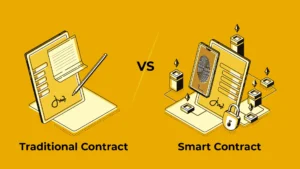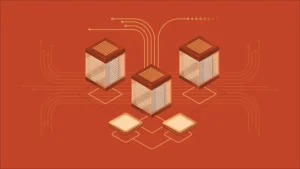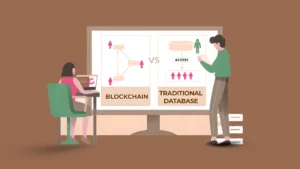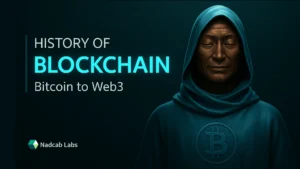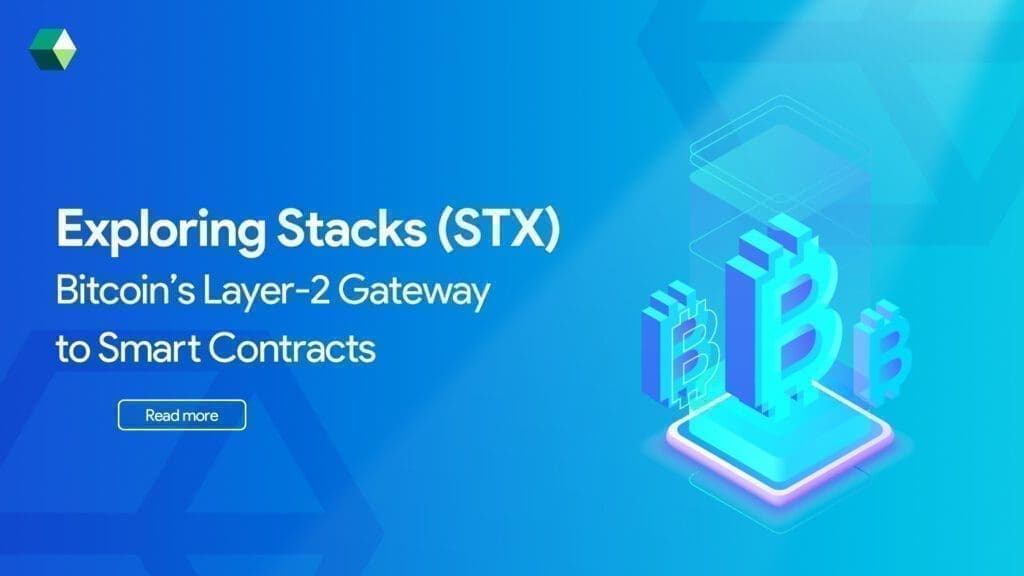
Bitcoin is the first and most widely recognized cryptocurrency, celebrated for its security, decentralization, and resistance to censorship. However, despite its strengths, Bitcoin has long been criticized for its limited functionality beyond basic transactions. This is where Stacks (STX) comes into play. Stacks is a revolutionary layer 2 blockchain that brings smart contract capabilities and decentralized applications (dApps) to the Bitcoin network, enabling developers to build powerful Web3 solutions without altering Bitcoin’s core protocol.
The concept behind Stacks is simple but powerful: use Bitcoin as the foundation for a more expressive and programmable blockchain ecosystem. Through innovations like Proof of Transfer (PoX), Clarity smart contracts, and microblocks, Stacks is reshaping what is possible in the Bitcoin ecosystem.
In this comprehensive guide, we will explore what Stacks is, how it works, the technology behind it, real-world use cases, and why it matters in the growing blockchain space. This blog will also highlight how Stacks represents a cutting-edge layer 2 blockchain solution for Bitcoin.
What is Stacks (STX)?
Stacks is an open-source layer 2 blockchain solution that extends the functionality of Bitcoin by enabling smart contracts and decentralized applications to run on top of it. Stacks does this without changing Bitcoin itself, allowing developers to leverage Bitcoin’s robust security while accessing new capabilities through an independent but connected blockchain.
Initially known as Blockstack, the project rebranded to Stacks in 2020 to better reflect its evolving mission. The Stacks blockchain operates alongside Bitcoin, embedding metadata into Bitcoin transactions to anchor its blocks and ensure finality. Its native cryptocurrency, STX, is used to pay for transaction fees, smart contract execution, and staking mechanisms. STX also plays a vital role in Stacks’ unique consensus model, Proof of Transfer.
Why Stacks Exists: Solving Bitcoin’s Limitations
Despite Bitcoin’s dominant position in the market, it was never designed to support advanced programmability. Bitcoin’s scripting language is intentionally limited to enhance security, making it unsuitable for building complex applications like those seen on Ethereum.
Stacks addresses this limitation by creating a bridge between Bitcoin and programmable logic. Instead of competing with Bitcoin, Stacks enhances its ecosystem by enabling smart contracts, NFTs, DeFi protocols, and other decentralized tools. This allows Bitcoin to become more than just a store of value — it becomes a platform for decentralized innovation.
How Stacks Works: The Technology Stack
To appreciate how Stacks revolutionizes Bitcoin, it’s essential to understand its core technological components. These include:
-
Proof of Transfer (PoX)
Proof of Transfer is a novel consensus mechanism that connects the Stacks blockchain to Bitcoin. Unlike Proof of Work (PoW) or Proof of Stake (PoS), PoX anchors Stacks’ block production to Bitcoin’s security model.
In PoX, STX miners participate by transferring BTC to eligible STX holders. This process secures the Stacks blockchain and allows STX holders to earn Bitcoin rewards through a process called Stacking. PoX ensures that Stacks leverages Bitcoin’s hashpower indirectly, making it one of the most secure smart contract platforms available.
-
Clarity Smart Contracts
Stacks uses Clarity, a predictable and decidable smart contract language developed in partnership with the Algorand project. Unlike Solidity (used in Ethereum), Clarity is not Turing-complete, which means it avoids many of the issues associated with unpredictable contract behavior. Clarity offers the following benefits:
- Smart contracts can be analyzed before execution
- Reduced risk of critical bugs or exploits
- Easier auditing and compliance
Developers can write, test, and deploy Clarity smart contracts to create secure, transparent dApps on top of Bitcoin.
-
Microblocks
Bitcoin’s average block time is 10 minutes, which introduces latency for applications needing faster responsiveness. Stacks solves this with microblocks, a mechanism that allows faster confirmations between Bitcoin blocks.
Microblocks enhance user experience without compromising on Bitcoin anchoring. This makes it possible to build dApps and DeFi platforms with near-instant interactions while still finalizing transactions on Bitcoin.
-
Bitcoin Finality
Stacks’ blockchain is anchored to Bitcoin through a process that embeds Stacks block headers into Bitcoin transactions. This anchoring gives Stacks blocks Bitcoin finality, meaning once a block is confirmed and anchored, it’s as secure as a Bitcoin block.
This integration ensures that the applications built on Stacks are protected by the same security guarantees that Bitcoin offers.
Key Features of the Stacks Ecosystem
Stacks introduces several unique features that set it apart from other smart contract platforms:
Real-World Use Cases of Stacks
Stacks enables a wide range of decentralized applications that are secured by Bitcoin. Some of the most notable use cases include:
-
Decentralized Finance (DeFi)
With Stacks, developers can create lending, borrowing, and trading platforms that use Bitcoin as a base asset. Projects like Alex and Stackswap are examples of DeFi applications that operate using Stacks smart contracts. These applications are becoming key components of the emerging landscape of layer 2 solutions for Bitcoin-based DeFi.
-
NFTs on Bitcoin
Stacks brings non-fungible tokens (NFTs) to Bitcoin. Artists and developers can mint, buy, and sell NFTs without relying on Ethereum or Solana, thereby leveraging Bitcoin’s security.
-
Decentralized Identity and Naming
The Blockchain Naming System (BNS) provides human-readable addresses and domains. This system allows for decentralized social media handles, web domains, and digital identities.
-
Bitcoin Yield through Stacking
STX holders can lock up their tokens in Stacks’ consensus mechanism and receive regular payouts in BTC. This is one of the only ways to earn Bitcoin directly through network participation.
-
Community Coins and DAOs
Projects like CityCoins enable local communities to issue their own tokens and support local development through DAOs. This introduces new models of governance and civic engagement tied to the Bitcoin network.
Advantages of Stacks
- Bitcoin Security- Stacks inherits Bitcoin’s robust security model. By anchoring all transactions to the Bitcoin blockchain, Stacks ensures high levels of immutability and resistance to attack.
- Fast and Predictable Transactions- Through microblocks and Clarity contracts, Stacks provides a faster, more user-friendly development and transaction experience.
- Passive Bitcoin Income- STX holders can earn Bitcoin through stacking, making Stacks one of the only platforms that rewards users in BTC for supporting network consensus.
- Open and Decentralized Ecosystem- Stacks is fully open-source and supported by a vibrant developer community. It promotes decentralization through community governance, grant programs, and transparency.
Challenges Facing Stacks
Despite its promise, Stacks is not without limitations:
- Clarity Language Learning Curve: Developers used to Solidity or JavaScript might face a learning curve with Clarity.
- Ecosystem Size: Compared to Ethereum or other layer 1 platforms, Stacks has a smaller ecosystem, although it’s growing steadily.
- Bitcoin Dependence: Stacks depends on Bitcoin’s base layer for anchoring, which can introduce latency or reliance on Bitcoin miners.
The Future of Stacks
The Stacks ecosystem continues to evolve with significant updates planned shortly. One of the most awaited developments is the Nakamoto Upgrade, expected in late 2024 or 2025.
- Near-instant Bitcoin finality
- Improved decentralization
- Better miner incentives and tokenomics
- Greater scalability
This upgrade is expected to make Stacks one of the most efficient, scalable, and secure smart contract platforms integrated with Bitcoin.
Additionally, developers are exploring ways to integrate AI, IoT, and real-world data oracles with Stacks, expanding its potential use cases even further. These innovations provide exciting opportunities for any layer 2 blockchain developer exploring Bitcoin-based smart contract environments.
Bring Your Ideas to Life on Bitcoin with Stacks!
Stacks is a game-changer for the Bitcoin ecosystem. By enabling smart contracts and decentralized applications on Bitcoin, it allows the world’s most secure blockchain to become a foundational layer for the decentralized internet.
From DeFi and NFTs to decentralized identity and passive Bitcoin income, Stacks offers a rich and rapidly expanding ecosystem for developers and users alike. Its unique blend of security, predictability, and scalability makes it a compelling platform for anyone looking to build or invest in the future of Web3 on Bitcoin.
As the cryptocurrency space matures and demand for secure, user-friendly smart contracts grows, Stacks is poised to become a vital piece of blockchain infrastructure. Forward-looking businesses can now partner with a layer 2 blockchain development company or utilize layer 2 blockchain development services to create innovative solutions on Stacks.


